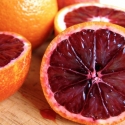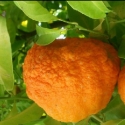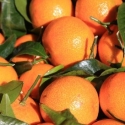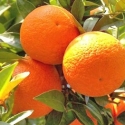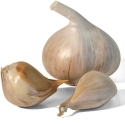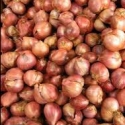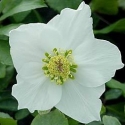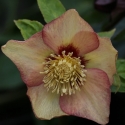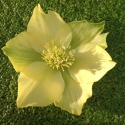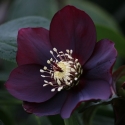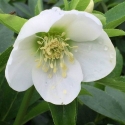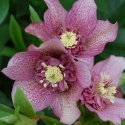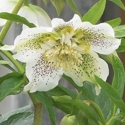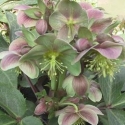Saturday 22nd April, 2023
Hi
Some fragrances go a long way
The musky scent that is in the air at the moment is mostly coming from a hedge or specimen tree of sasanquas, I always associate this time of year with this fragrance which reminds me that we are truly in the Autumn. Look around and you can see this species of
Camellias and all its cultivars in mass bloom just everywhere.
So from that intro if its a
Camellia in flower right now then one could almost assume that its going to be a Sasanqua which is one of the main ornamental species of Camellia. Of course as in most species there is a myriad of cultivars that we can tempt you with. But rule of thumb most
Sasanqua Camellias have smaller leaves and often flowers than their counterpart species the
Japonicas and
Reticulatas. The flower form of these fragrant sasanquas are often singles, informal doubles or formal doubles..
The other interesting point about sasanquas is that they quite often have a weeping or slightly cascading habit more so than their counterpart Japonicas which are quite shrubby by comparison. Sasanquas have a reputation for being tough and hardy and can be quite sun tolerant.. well I think that most Camellias are robust and will actually grow in most places.
The other claim to fame that
Sasanquas have is that they make for the most stunning hedges for a variety of reasons. They are a bit slower growing until established but have very long life as hedges. Not so many plants love being constantly cut into and trimmed but Camellias are up there in coping and also regeneration which are all very desirable traits for a plant that you want to hedge.
Then there is the fact they can mature into quite fine small evergreen trees and these are blossoming their hearts out right night around the Waikato... Of course with some trimming you can keep all of these sasanquas as shrubs suitable for the garden as well.
Some classic Sasanquas
Setugekka is a goodie and been around forever. quite upright and bushy in habit, Flowers are largish, white and single with yellow stamens... like a Sunnyside fried egg. Foliage is traditional classic dark green with typical sasanqua style leaves... Makes for an fabulous hedge and there are several grades available.
Early pearly is another popular choice with one of the earliest flowering with formal double pure white flowers, More arching growth habit that is easily tamed into a tight and dense hedge.
Yuletide... as its name suggest single bright red flower with prominent yellow stamens.. This one is fab for smaller hedges as its quite upright but has a closer internode between leaves and so it tends to be more shrubby and bushy from day one
Silver dollar is another classic with typical leaves and medium size informal double white flowers .. Another quite bushy form with short internodes and so will bush up nicely into a hedge.
So many that I can't list them all here and so you may need to click through to see them.. In case you think they are mostly white then there are a couple of pinks that spring to mind like
Plantation pink and
Jennifer Susan. Then there is the more recent additions of the Paradise series and a quick wander amongst the hedging selections came across
Paradise pearl,
Blush and
Little Lianne.
We are spoilt for choice for the selection that is in the garden centre right now, not only in terms of variety but also grades ranging from smaller sizes right through to mid range to some quite large specimans.
Orange being more than a colour
Well I learnt a bit about
Mandarins last week and I felt sure that there was more to oranges than just their colour. For instance lets sort out the navels from the Valencia's, Bloods and the rest, so here it goes
Navels versus, Valencias both belong to the genus Citrus X sinensis
I never knew ( though I probably guessed that a navel is called such due to the human navel appearance at the top of the orange). Its actually a second twin fruit opposite the stem.
I have a hunch that the story behind the navels is that most of them will be quite related to each other, a little like the tale of the Satsuma mandarins. When I looked into some of them they were mostly limb sports (mutations) of Washington Navel.
Fukumoto originally from Japan is a mutation from the
Washington navel orange.
Navelate is a sport from Washington navel as is
Newhall. Powells navel is a Australian selection, again probably a sport of Washington seedless. Then there is even a NZ selection being
Best seedless though I didn't get to the bottom of its origins.
Navelina oranges were discovered as a natural mutation in California, selected as budsport for the citrus research centre in California and then exported and trialed in Valencia returned and renamed to the world as
Navelina.
We have quite a few
orange navel cultivars either in stock or coming, being Washington, Powell, Parent, Best seedless, Carters, Fukumoto, Navelina Navelette and Newhall. I understand that Navel oranges are winter fruiting and if you look at your navel oranges right now they are very slowly starting to colour.
The
Valencia oranges are named after the city of Valencia in Spain although actual origins are unknown. I didn't realize though that Harwood late is a Valencia style and apparently
Lue Gim Gong is another that we stock that dates back to Florida in 1876. The thing about the
Valencia oranges is that they are summer fruiting and on that note I am still eating
Harwood late from last year from my citrus orchard and they are delicious still. If you want a long Orange season then obviously you are going to need a navel and a Valencia!!!
Blood oranges.. Orange on the outside and red perhaps pink on the inside
Then there are the blood oranges that have an antioxidant called anthocyanin. This antioxidant gives blood oranges their distinct color, and also anti cancer properties and help your body reduce damage from free radicals. This pigment develops when the fruits are fully ripe, and they need very specific weather conditions to do this. Early-season blood oranges are more likely to be pale red or even orange in color.
Moro - The most common blood orange found in the US. The flesh is a darker-red than other varieties, sometimes almost purple. They are the earliest blood orange to ripen.
Sanguinello - The favored blood orange out of Spain. The peel is yellow-orange, often with intense red/blush spots. The flesh is orange with burgundy streaks that can sometimes look brownish. These ripen later in the season.
Tarocco - The favored variety from Italy. The flesh is less red than other blood orange varieties and the peel has little-to-no red-blush. This variety has the sweetest, strongest flavor and require coldness of night to give it its red colour
Cara Cara oranges have distinctly pink flesh and for the Cara Cara orange, the pinkish color comes from lycopene, a carotenoid rather than anthocyanin like other blood oranges. Blood oranges are found and cultivated in mostly in Spain, Italy, and California though Cara Cara oranges are mostly grown in California.
Then there are a few different species
Orange bergamot , Citrus bergamia is a probable hybrid between a lemon and a bitter orange and famous for the flavour in Earl grey tea but also used as flavourings for cookies, custards maralade and cocktails
Orange seville, Citrus x auranticum marmalade, bitter orange often used for making marmalade.
Orange sinensis, Vailiglia pink This is a pink fleshed (lycopene) sweet orange; very sweet, almost acidless. Pink color is in albedo and flesh next to rind only.
Arrived this week
Garlic has arrived and in the shop. Its been a great crop this years and so we have plenty of garlic to offer. Typically planted around the shortest day and harvested around the longest day or thereabouts but be in to secure yours
Printanor 100g. roughly 3ish heads 200g 7 to 8 ish heads 500g and 1kg..
Its that time again .. I can't believe how fast the seasons roll around and it the beginning of the Helleborus (Winter rose) season again. Semi shade for these beauties.. Look amazing mass planted in a woodland area.
Winter roses, its the famous Clifton series of helleborus that are selected for their specific shades or species. listed here
Dark Hybrid, White picotee, White hybrids, White magic, Double hybrids, Wester fisk, Pink, Yellow single, Sternii clifton select, Betty Ranicar, and Apricot Helleborus Tutu and
Tutu white are always really popular Winter roses with their cool flowers that are single but with the anenome centre for which is their claim to fame just like a tutu or ballerina skirt. Tutu is dark rose pink shades and speckled and the white is white with pink speckles ... Both gorgeous
Helleborus Ice queen as its names suggest Pristine white on green foliage always a winner. These always go so dont miss out .
Ang wanted me to mention the
Ericas also arrived this week but i will just make a link as this weeks email is long enough
Anzac day is Tues coming and the garden centre will be open from 1pm until 5pm.. On that front its an odd week for deliveries as the Aramax wont be collecting from us as usual on Monday as no freight will happen until the Wednesday. This means that we won't send any South island or distant tricky rurals until the following week.
School Holidays and we have had the nephew and niece here to stay for a few days and so it was off to the Hamilton gardens, a day working in the nursery... and all good fun. Enjoy the last few days of the holidays and have a great weekend to everyone.
Cheers from Lloyd, Tony and the Wairere team.
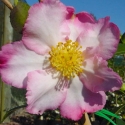
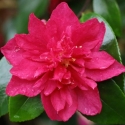

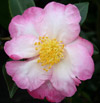
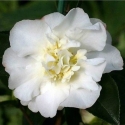
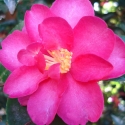
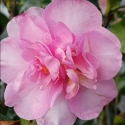

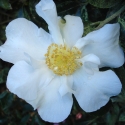
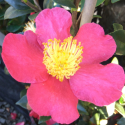



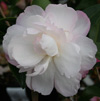
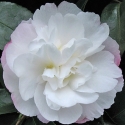
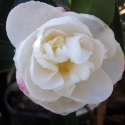
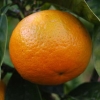
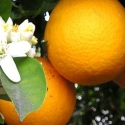
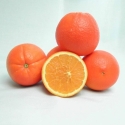
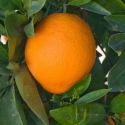

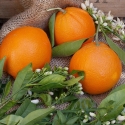
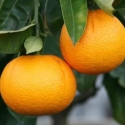
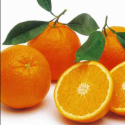
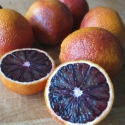
.jpg)
